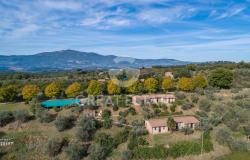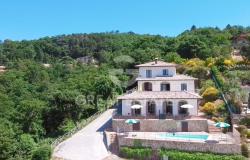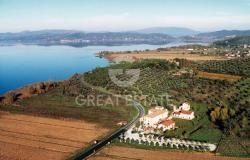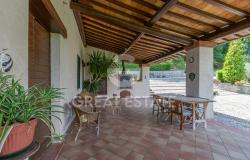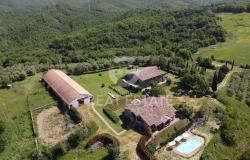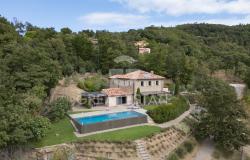gas prices bombolone
Submitted by melbreak on Thu, 02/02/2012 - 12:10In reply to A newbie all over again! by Annec
it is correct...
Submitted by stevegwmonkseaton on Wed, 01/25/2012 - 15:38In reply to A newbie all over again! by Annec
... that is the case here also, but you will be contracted to them for a fixed term. If like here it will now have to be buried and so many metres from any road or house, but they will do it all. We were quoted 600 for it about 6 months ago, would guess that would be a lot more now! We only want it for cooking and perhaps later for domestic hot water (would NEVER use it for heating... far too expensive).
My experience with Liquigas
Submitted by belvedere on Wed, 01/25/2012 - 19:10In reply to it is correct... by stevegwmonkseaton
My experience with Liquigas (not sure about other companies) is that they will supply and install an underground tank, and fill it, at no charge. They put a meter on the tank and a device to read the consumption remotely (if there's a cell phone signal in the area). They then take the responsibility for topping up the tank at intervals and you are charged only for the gas you consume. By reading the numeric meter, you can keep an eye on your consumption - it reads in cubic meters, which work out at about 4 euro per cu.m. But it sounds to me as though you are at the point at which you might want to think seriously about whether you need a gas tank. The disadvantages are the very high cost for heating use and the increasingly stringent safety regulations regarding the tank. New installations (this probably varies regionally) have to have a high, secure fence enclosing quite a large area around the tank, certain types of planting are not allowed too close to the tank, fire extinguishers have to be available and there are endless visits to check the extinguishers, check the valve etc etc.
We had a bombolone installed
Submitted by Maurice on Wed, 01/25/2012 - 19:12In reply to A newbie all over again! by Annec
We had a bombolone installed free of charge but it has its downside. The amount they charge you will depend upon how much you use; they need to get their money back. We had our first refill after 3 years and paid quite a hefty premium on the gas. Notwithstanding this I don't regret the decision
In reply to A newbie all over again! by Annec
it depends where you are. I have a bombolone in comodato d'uso - there is no premium on not using much gas - you pay for what you buy, when you buy it, but obviously i am tethered to the company who has given me the bombolone. I chose to have an above ground one, which must be on a concrete base, with a fence etc etc -
The other solution
Submitted by sagraiasolar on Thu, 01/26/2012 - 03:35In reply to A newbie all over again! by Annec
This bombola thing is a legacy of old gas heating technology... there is no need for them these days. You can't afford to use gas for heating and there are plenty of alternatives that run on a fraction of the price - if not free. A couple of small cylinders are adequate for cooking and as you are not paying back the gas company for their expensive bombola installation it's much cheaper. My bombola lasts for around 6 years between refills and I wish I'd never had it in the first place.
The other solution?
Submitted by pandc on Thu, 01/26/2012 - 08:59In reply to The other solution by sagraiasolar
The house we own has gas central heating, I.e. traditional boiler and radiators, it was already installed when we bought the house. Some people keep saying that gas is too expensive for heating (and I agree, believe me!) and other are saying that there are alternatives that run on a fraction of the price. Can somone elaborate on what these alternatives are and how easy it is (or not as the case may be) to switch from traditional gas central heating to one of the alternatives. I agree that gas is extrmely expensive. When we visit for a week at New Year and we put the heating on the cost runs into the hundreds of euros but we have no alternative, as we are there only occassionally the house gets really cold during the winter months and we have to put the heating on.
Alternatives
Submitted by Badger on Thu, 01/26/2012 - 09:59In reply to A newbie all over again! by Annec
Alternatives... absolutely
Submitted by sagraiasolar on Thu, 01/26/2012 - 12:33In reply to Alternatives by Badger
Yup, I think Badger has nailed it for you... the inverters will be about 3 times cheaper than gas (correct me if I'm wrong Badger) so you'll get your money back quite quickly. All very quick to install too. If you were there more of the time then joining us log luggers with a stove and heat bank would be nice and about as cheap as we can go in Italy.
which inverter?
Submitted by sagraiasolar on Thu, 01/26/2012 - 14:01In reply to Alternatives by Badger
I only realy know the IVT
Submitted by Badger on Thu, 01/26/2012 - 14:20In reply to which inverter? by sagraiasolar
Thanks for all comments and advice
Submitted by pandc on Fri, 01/27/2012 - 06:04In reply to A newbie all over again! by Annec
be careful they don't charge
Submitted by debswad on Fri, 01/27/2012 - 17:23In reply to A newbie all over again! by Annec
be careful they don't charge you for installing the meter , we were looking to change our provider .They wanted to first put a different bombola in , then agreed to use the same one but said there will be a 2 euro a month fee for the meter !!! I am lucky all my neighbours use the same gas firm so we have a little bit of persuasive power ..
gas prices bombolone
Submitted by melbreak on Thu, 02/02/2012 - 12:10In reply to A newbie all over again! by Annec
In reply to A newbie all over again! by Annec
Gas and alternatives
Submitted by getsett on Thu, 02/02/2012 - 12:55In reply to A newbie all over again! by Annec
We have Gpl gas ch and radiators with a boiler and the Gpl is supplied to a large underground bombolone in our locality by Energas. The last bill showed a cost of about 3.80 a cubic metre. Having done some research I think that is 1000 litres so the cost was 3.80 a litre. On top of that is IVA, and a small fixed charge. Our neighbour who lives there full time had a bill of over 800 Euros for 6 weeks over Jan and Feb when he moved in a couple of years ago so he has converted to a "stufa" with wood pellets. He says that one bag costs about 3 Euros and lasts 2 days to heat the same radiators and provide hot water. His house is on 2 floors with 2 large bedrooms, a large living/dining room and reasonable kitchen, 2 bathrooms and possibly some of the garage/cantina (which is mostly underground) is heated. The installation cost of the stufa and fixing it up to the ch system was about 4,000 Euros. He is very happy that he changed over and says he is saving lots. In the milder weather when ch is not needed he uses the Gpl to heat the hot water. We are not out in Italy that much in winter so felt that the installation cost of the stufa was too high for our needs.
rams price
Submitted by melbreak on Thu, 02/02/2012 - 13:36In reply to A newbie all over again! by Annec
Pellet costs
Submitted by belvedere on Thu, 02/02/2012 - 14:22In reply to rams price by melbreak
The figures re pellets sound low to me. I run a 9kw pellet stove that consumes one 15kw bag per day if run for most of the day. For a good quality pellet brand I pay 4.70 or 5.20, depending which supplier I go to. A friend runs a pellet boiler firing underfloor heating and hot water which uses up to 3 bags per day.
Wood pellet costs
Submitted by getsett on Thu, 02/02/2012 - 19:47In reply to A newbie all over again! by Annec
My neighbour may be glossing the price down but I know he buys the bags in very large quantities (for him and for a relative's house) so perhaps he gets a good price. He and his wife (both in their 60s) are in most of the day and night so I think would keep the heating on for a long time. As for our price for Gpl - it is very high I think and perhaps it is just as well that we don't go out there much in the winter!
COSTS AND SAVINGS
Submitted by Gala Placidia on Fri, 02/03/2012 - 01:18In reply to A newbie all over again! by Annec
I must confess that we have never paid much attention to our energy consumption. Generally, we are not at Bagni di Lucca in the middle of winter. Our house is very well insulated, we are connected to the town gas supply and it only takes about 15 minutes for the place to feel warm and welcoming. Our gas bills have not been large; however, I can see that costs are escalating and perhaps it is a good idea to carefully consider offers and alternatives. Our neighbours, who permanently live there, complain about the amount of money they have to spend on energy, but then... it is a very large house with a workshop and I do not think that insulation is their "forte". They have installed a large pellet stuffa to assist with the heating and their house feels warm whenever I enter it. But then... I do not know whether they are doing the right thing or not. Looking at costs through the Internet, I found this link: http://energia.supermoney.eu/gas-riscaldamento/ I believe that it gives very interesting information on the topic. With this very cold weather, energy consumption must be extremely high. I do not want to think about the bills... Anyway, keep warm!
Wood and power cuts.....
Submitted by sagraiasolar on Fri, 02/03/2012 - 06:36In reply to A newbie all over again! by Annec
There's nothing like being snowed in for a few days - or weeks? - to focus the mind on energy etc. I know I keep banging on about wood being the best and cheapest but there is another consideration. Does your system work when there is a power cut? Pumped well water, Heat pumps, Gas boilers, pellet stoves, wood furnaces, pumped radiator circuits and even badly installed wood stoves on pumped circuits don't. Apart from being the cheapest energy source by a big margin a wood stove can be made to run heating and cooking with no electical assistance. All it takes is a bit of crafty plumbing to make it work safely and what you do is to use the heat dump circuit normally found on a pumped wood stove and fit that even if the stove is fitted to thermosyphon to a heat bank. Then the circuit can deliver heat to a radiator or two whenever you like and also double as the emergency heat dump. There have been some costs mentioned for pellets and gas. This exposed 300mq farmhouse consumes €6 a day in wood (€1,200 \ 200 days) and the gas bill is around €200 (yes hundred) a year although that's mainly down to cooking.







